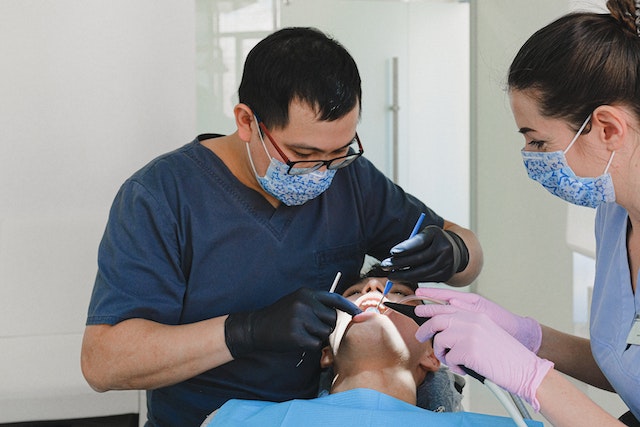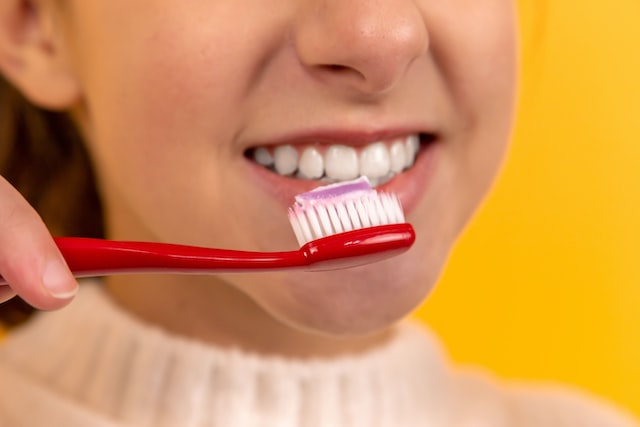A healthy set of teeth and gums can only be maintained by regular brushing and flossing. Maintaining good oral hygiene requires consistent efforts like brushing twice daily and seeing the dentist regularly.
However, there’s more to good dental health than just avoiding cavities and gum disease. Science has shown a link between oral health and systemic wellness.
Cavities and gum disease may cause discomfort, loss of self-confidence, and even tooth loss if they are not treated. Malnutrition, speech impairment, and other difficulties in a person’s professional and personal life may result from these conditions.
Proper oral hygiene, both at home and in the dentist’s office, may help people avoid these issues. Here are some guidelines for to Maintain Dental Hygiene.
1. The first rule of brushing is to do it often yet gently.
Maintaining healthy teeth and gums may be accomplished by brushing twice day and using dental floss. Most people know that brushing twice a day is one of the best ways to maintain their teeth free of plaque and germs. However, it is possible that proper brushing technique is necessary for its benefits to be realized.
People should use gentle circular strokes to brush their teeth, making sure to reach the back and top of each tooth. It takes around two to three minutes to complete. Individuals should stay away from sawing actions.
Overly much force or a toothbrush with bristles that are too rough might harm your gums and teeth. Gum recession, tooth decay, and sensitivity are all possible outcomes of this situation.
2. Fluoride should be used.
The soil naturally contains fluorine, the ingredient that gives fluoride its characteristic odor and taste. There is a lot of evidence suggesting that fluoride in toothpaste and mouthwash may reduce the prevalence of tooth decay, so it’s no surprise that many people take advantage of this practice. On the other hand, not all toothpastes have fluoride and not everyone takes the precaution.
Lack of fluoride has been linked to tooth decay, even in those who practice good oral hygiene. One way for citizens to learn whether fluoride is added to their water supply is to contact their municipal authorities. People who utilize well water should monitor their water for fluoride levels since reverse osmosis filters remove the mineral. Fluoride is not often found in bottled water.
3. Floss at least once daily.
Plaque and germs can only be removed from between teeth by flossing, something a toothbrush cannot do. Also, by eliminating food and debris from in between the teeth, it may aid in the fight against bad breath.
In order to properly clean between teeth, floss should be carefully pushed down to the gumline and then hugged up and along the side of each tooth. Avoid snapping the floss up and down between the teeth, which may be painful and does not remove plaque as well.
4. Maintain regular dental checkups.

Oral health problems may be identified and treated early by a dentist. Every six months, individuals should have a checkup at the dentist, since it is the frequency recommended by experts. A hygienist will polish your teeth and scrape away tartar and plaque during a basic dental checkup.
The dentist will look for obvious indicators of tooth decay, gum disease, and oral cancer. Sometimes they’ll utilize X-rays of the teeth to look for cavities.
People should consult their dentist about how often they should get checkups. The answer might be different for each individual because of factors including their age, medical history, and current oral condition. Any alterations to the mouth, however, need a trip to the dentist.
5. Do not smoke number
It is more difficult for the body to mend tissues, particularly those in the mouth, when a person smokes. If you smoke, your teeth and tongue will become yellow, and your breath will have a foul stench.
6. Use a mouthrinse
Researchers have shown that certain mouthwashes do help with dental hygiene. Mouthwashes with the antibacterial component chlorhexidine, for instance, have been shown to be effective in reducing plaque and gingivitis, according to a review. The use of mouthwashes containing certain essential oils has also been shown to be beneficial in a meta-analysis.
If people aren’t sure which mouthwash is ideal for them, they should probably contact their dentist. Although mouthwashes are not meant to replace regular brushing and flossing, they may be used in conjunction with these other dental hygiene routines for optimal results. You may get mouthwashes for tooth decay and foul breath on the internet.
7. Try to eat less starchy and sugary meals.
Too much sugar in your diet might cause tooth decay. The detrimental effects of sugar on oral health have been the subject of several studies. Candies and sweets are often to blame, but many processed meals also have sugar added to them.
Starchy meals like crackers, bread, chips, and spaghetti have also been linked to dental decay by experts. According to the ADA, these meals don’t leave the mouth quickly and are broken down into simple sugars that acid-producing bacteria love to eat. Teeth decay may be caused by this acid.
8. Rather of drinking sugary beverages, you could try water.
The majority of the additional sugars consumed by the average American comes from sugar-sweetened drinks. Drinking sugary beverages like soda, juice, and sports drinks might increase your chance of developing cavities.
Summary
Maintaining healthy teeth and gums requires consistent dental hygiene routines from childhood into maturity. Cavities, gum disease, and other dental concerns may be avoided by daily brushing and flossing, avoiding smoking, eating a healthy diet, and going in for regular dental examinations. In the long run, it might be good for their health.







